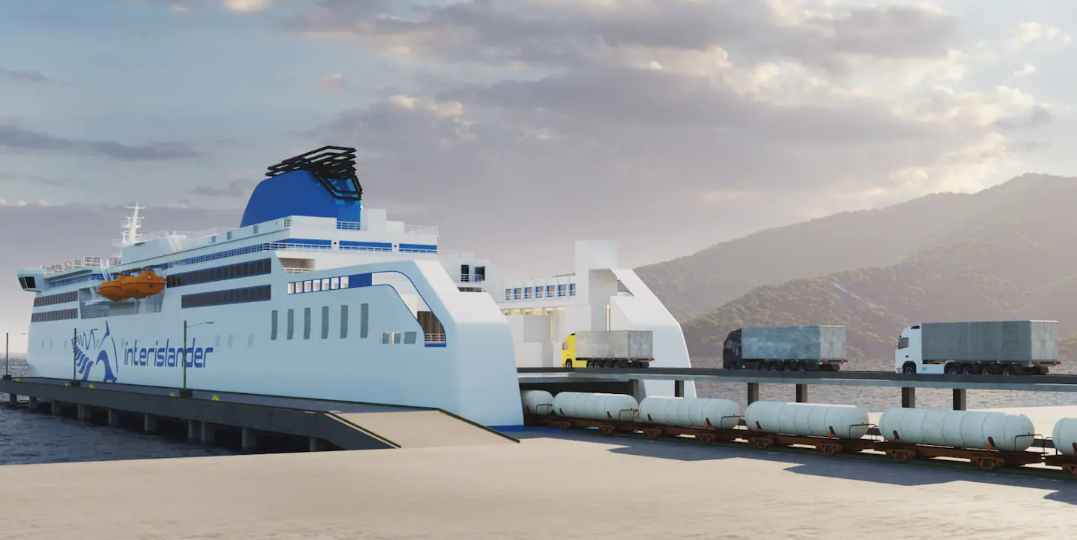New Zealand Transport Minister Winston Peters announced on Wednesday (19th) that the New Zealand government had signed a contract on the 17th with Guangzhou Shipyard International (GSI) through procurement company Ferry Holdings for the construction of two ro-pax vessels, according to Newstalk ZB, a leading New Zealand media outlet.

The total order value is NZ$596 million (approximately US$335 million). Construction of the new vessels is scheduled to commence in 2027, with all deliveries completed by the end of 2029.
To meet the operational requirements for two new vessels, Picton and Wellington ports in New Zealand require the construction/upgrade of supporting infrastructure. Including project management fees and contingency reserves, an additional investment of NZ$1.27 billion (approximately US$711 million) is needed. Combined with the cost of the new vessels, the total investment for this project series amounts to NZ$1.866 billion (approximately US$1.045 billion).
Regarding the total project investment, Winston Peters specifically emphasized: “The overall project cost will be less than NZ$2 billion, with the taxpayer’s share lower than the previously announced NZ$1.7 billion. This allows us to secure the required ferry and infrastructure while achieving cost savings.”
Compared to the Ministry of Finance’s earlier warning of costs reaching NZ$4 billion, the new plan will save over NZ$2 billion (approximately US$1.12 billion). The previous high-cost proposal stemmed from the now-rejected approach of relying on expensive consultants who inflated total costs by continually increasing infrastructure expenses.”
According to reports, this ro-pax vessel was commissioned by New Zealand’s national rail operator KiwiRail. Upon delivery, it will primarily serve routes across the Cook Strait. Measuring 200 meters in length and 28 meters in width, the vessel can accommodate 1,530 passengers and has a design lifespan of 30 years. It features 2.4 kilometers of truck lanes and space for 40 rail freight cars, significantly enhancing cargo capacity compared to the existing fleet.
The new vessel features a hybrid power design that can switch between diesel and electric power, aiming to improve the vessel’s environmental performance. The diesel engine (compatible with biofuels) will power the main propulsion system and onboard services. It is equipped with energy storage batteries that provide supplemental power to the vessel. These batteries can be charged during navigation or replenished by shore power, which helps save fuel and reduce environmental impact.

It is worth noting that the new vessel was originally planned to feature a conventional fuel design but was later converted to a hybrid design capable of operating on both electricity and diesel. When news of the collaboration with a Chinese shipyard emerged earlier, the New Zealand government stated it would continue advancing the “practical solution” proposed in May 2020. At that time, industry observers believed the new vessel would revert to its initial conventional fuel design. However, according to the latest information, the more future-oriented hybrid design was ultimately selected.
Additionally, while announcing the signing of the new vessel, Winston Peters revealed that he would visit GSI alongside representatives from Ferry Holdings in the coming days. This visit, he stated, “is not only to witness the significant agreement with the shipyard but also to contribute to advancing economic relations between China and New Zealand.”
The New Zealand government has long anticipated this shipbuilding contract. It comes nearly two years after the government scrapped the previous Inter-Island Ferry Replacement (iReX) project, which was halted due to costs ballooning to nearly NZ$3 billion.
It is understood that New Zealand’s iReX project commenced in 2020. In 2021, it signed a contract with South Korea’s HD Hyundai Mipo for the construction of two new ro-pax vessels. However, the project’s costs have surged more than fourfold over four years, with only 21% of the increase attributable to the core objective of “replacing existing ferries.”
Considering the “abnormal” cost expenditures, the New Zealand government decided to cease further funding for the project. After the financial assistance was denied, KiwiRail contemplated reselling the ro-ro ferry to other shipowners but ultimately decided to cancel the order.
Considering the “abnormal” cost expenditures, the New Zealand government decided to cease further funding for the project. After the financial assistance was denied, KiwiRail contemplated reselling the ro-pax vessel to other shipowners but ultimately decided to cancel the order.
In August 2025, KiwiRail and HD Hyundai Mipo completed negotiations regarding the cancellation of their ro-pax vessel order, officially terminating the shipbuilding project. Including compensation and the deposit already paid, HD Hyundai Mipo ultimately received $220 million from the shipowner, equivalent to over 70% of the order’s $370 million value. Had the order not been cancelled, the two ro-pax vessels were originally scheduled for delivery in 2025 and 2026 respectively.


